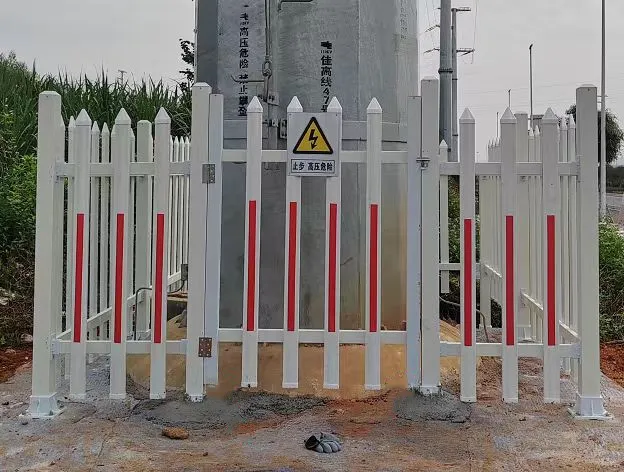loading...
- No. 9, Xingyuan South Street, Dongwaihuan Road, Zaoqiang County, Hengshui, Hebei, China
- admin@zjcomposites.com
- +86 15097380338
- Welcome to visit our website!
Innovative Applications of Fibreglass Reinforcement Bars in Modern Construction Techniques
The Advantages of Fibreglass Reinforcement Bar in Construction
In recent years, the construction industry has seen a significant shift towards innovative materials that enhance structural integrity while reducing overall costs. One such material gaining popularity is the fibreglass reinforcement bar, commonly known as GFRP (Glass Fibre Reinforced Plastic) rebar. This article explores the advantages of GFRP rebar and its potential to revolutionize building practices in concrete reinforcement.
What is Fibreglass Reinforcement Bar?
Fibreglass reinforcement bar is made from a combination of glass fibers and resin, which together create a lightweight, high-strength material that offers exceptional performance characteristics. Unlike traditional steel rebar, GFRP rebar does not corrode when exposed to harsh environmental conditions, making it particularly useful in structures that experience moisture, salt, or chemical exposure. This non-conductive nature also means that GFRP rebar is advantageous in applications where electromagnetic interference must be minimized, such as in certain electronic facilities or medical environments.
Durability and Longevity
One of the most significant advantages of fibreglass reinforcement bar is its exceptional durability. Traditional steel rebar often suffers from corrosion, leading to spalling and deterioration of concrete structures over time. In contrast, GFRP rebar is resistant to corrosion, reducing the need for costly repairs and extending the lifespan of the structure. Studies have shown that structures reinforced with fibreglass rebar can have a service life that is significantly longer than those using traditional materials, often exceeding 50 years with minimal maintenance.
Lightweight and Easy to Handle
Fibreglass rebar is considerably lighter than steel rebar, which translates to easier handling and installation on construction sites. This reduction in weight can lead to substantial savings on transportation costs and labor, as fewer personnel are required for maneuvers and setups. Furthermore, the ease of cutting and shaping GFRP rebar allows for more versatility in design and application, making it easier to adapt to various construction needs.
fibreglass reinforcement bar

Cost-Effectiveness
While the initial cost of fibreglass reinforcement bars may be higher than that of conventional steel, the long-term savings associated with reduced maintenance and longevity make GFRP rebar a cost-effective choice in many instances
. The reduction in repair costs due to corrosion damage can lead to significant savings over the life of a structure, ultimately justifying the initial investment. Additionally, GFRP bars are often simpler to transport and install, further reducing overall project costs.Environmental Considerations
In an era of increased awareness regarding sustainability, the usage of fibreglass reinforcement bar aligns with eco-friendly construction practices. Because GFRP rebar is impervious to chemical attack, it typically requires less repair and replacement over its lifecycle, thereby reducing waste. Moreover, as a composite material, fibreglass rebar can be manufactured in a more environmentally responsible manner compared to traditional methods used for steel production.
Applications of GFRP Rebar
The applications for fibreglass reinforcement bar are extensive and varied. GFRP rebar is particularly beneficial in the construction of bridges, tunnels, and structures located in coastal regions where salt exposure can accelerate corrosion. Moreover, it is increasingly being used in industrial flooring, precast concrete products, water treatment facilities, and agricultural structures, showcasing its versatility across different construction domains.
Conclusion
In conclusion, fibreglass reinforcement bar presents a range of advantages that can greatly enhance the engineering and construction landscape. Its durability, lightweight nature, cost-effectiveness, and environmental benefits make it a compelling alternative to traditional materials. As the construction industry continues to evolve and embrace innovative technologies, the adoption of GFRP rebar can contribute to creating more robust, sustainable, and efficient structures that stand the test of time. With ongoing advancements in material science and engineering, the future prospects for fibreglass reinforcement bars look promising, placing them at the forefront of modern construction solutions.
-
Why Choose a Galvanized Water Tank for Your Storage NeedsNewsMay.21,2025
-
The Strength and Durability of FRP GratingNewsMay.21,2025
-
The Importance of Water Treatment Systems for Clean and Safe WaterNewsMay.21,2025
-
The Advantages of FRP Rebar for Construction ProjectsNewsMay.21,2025
-
Say Goodbye to Hard Water with a Reliable Water SoftenerNewsMay.21,2025
-
Maximize Your Water Storage with a Sectional Water TankNewsMay.21,2025
-
The Power of Filter VesselsNewsMay.19,2025
